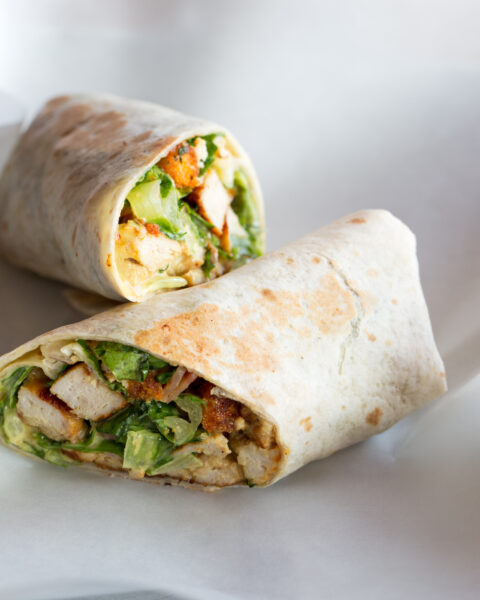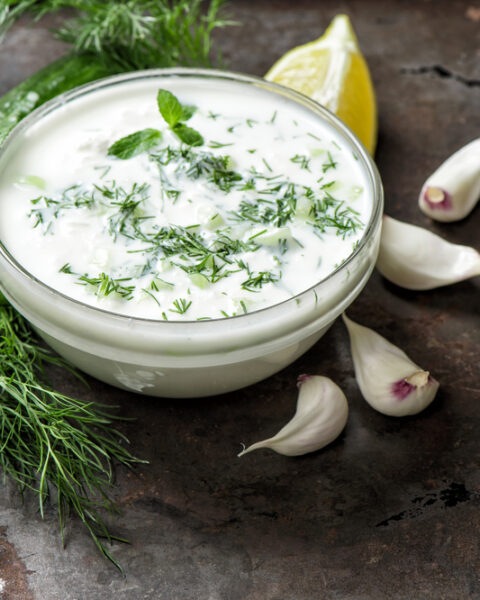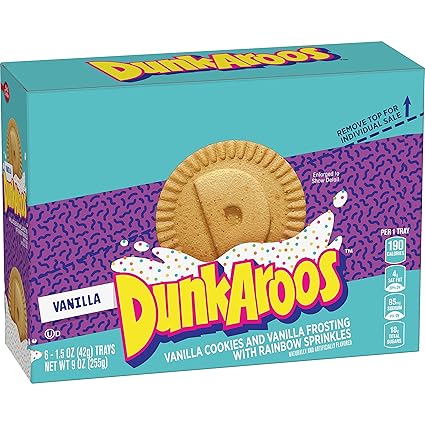Southeast Asia is a paradise for street food lovers. From bustling night markets to charming roadside stalls, the region serves up flavors that are bold, unique, and unforgettable. Whether it’s something savory, sweet, or totally unexpected, the variety will blow you away. Let’s take a stroll through these streets and dive into the must-try snacks that make Southeast Asia a foodie’s dream.
Contents
- 1 Siomay (Indonesia)
- 2 Bánh Tráng Nướng (Vietnam)
- 3 Martabak Manis (Indonesia)
- 4 Kwek-Kwek (Philippines)
- 5 Khanom Buang (Thailand)
- 6 Pisang Goreng (Indonesia/Malaysia)
- 7 Chả Cá Lã Vọng (Vietnam)
- 8 Kaya Toast (Singapore/Malaysia)
- 9 Balut (Philippines)
- 10 Mango Sticky Rice (Thailand)
- 11 Roti Canai (Malaysia)
- 12 Takoyaki (Indonesia/Thailand)
- 13 Halo-Halo (Philippines)
- 14 Pandan Waffles (Vietnam)
- 15 Coconut Ice Cream (Thailand)
- 16 Kerak Telor (Indonesia)
- 17 Apam Balik (Malaysia/Indonesia)
- 18 More From RetailShout
- 19 15 Pumpkin Spice Treats That Aren’t Lattes to Try This Fall
- 20 16 Best ALDI Finds for Hosting the Perfect Fall Gathering
Siomay (Indonesia)
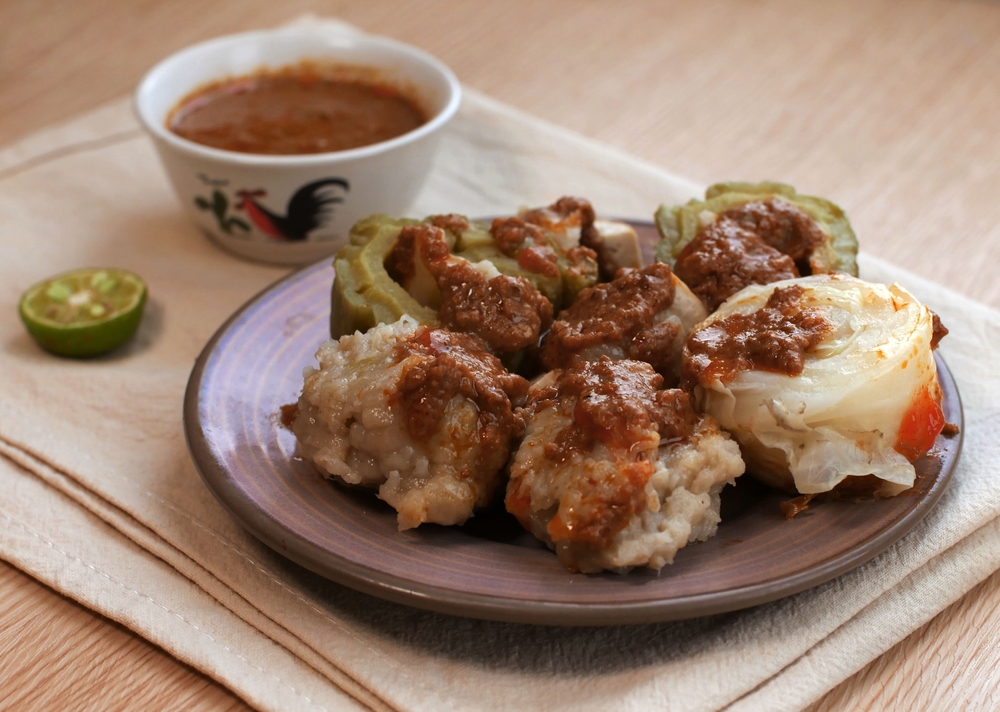
Siomay is an Indonesian steamed dumpling made from fish paste, often served with tofu, potatoes, cabbage, and bitter melon. This dish is typically accompanied by a savory peanut sauce, sweet soy sauce, and a squeeze of lime, enhancing its flavor profile. Originating from Bandung, Siomay has become a popular street food across Indonesia, enjoyed by locals and tourists alike. Vendors often serve it from pushcarts, allowing patrons to customize their portions. The combination of textures and flavors makes Siomay a delightful snack at any time of the day.
Bánh Tráng Nướng (Vietnam)
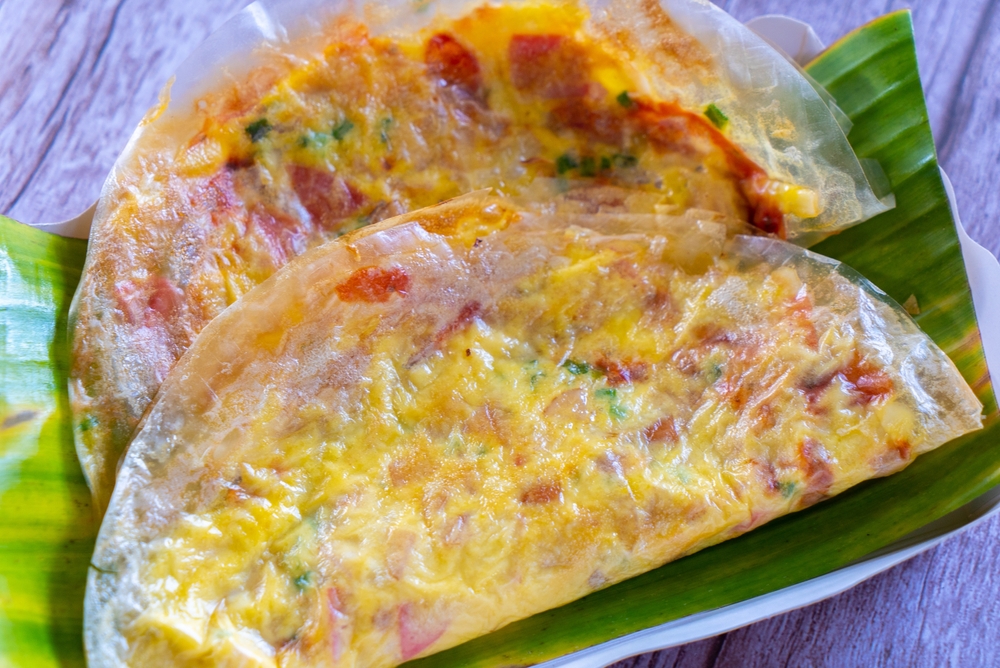
Often referred to as “Vietnamese pizza,” Bánh Tráng Nướng is a grilled rice paper topped with a variety of ingredients. Common toppings include quail eggs, dried shrimp, pork floss, green onions, and chili sauce. The rice paper is grilled over charcoal until crispy, resulting in a savory and crunchy snack. This street food is especially popular in Da Lat and Ho Chi Minh City, where vendors prepare it fresh upon order. Its versatility allows for numerous variations, catering to different tastes and preferences.
Martabak Manis (Indonesia)
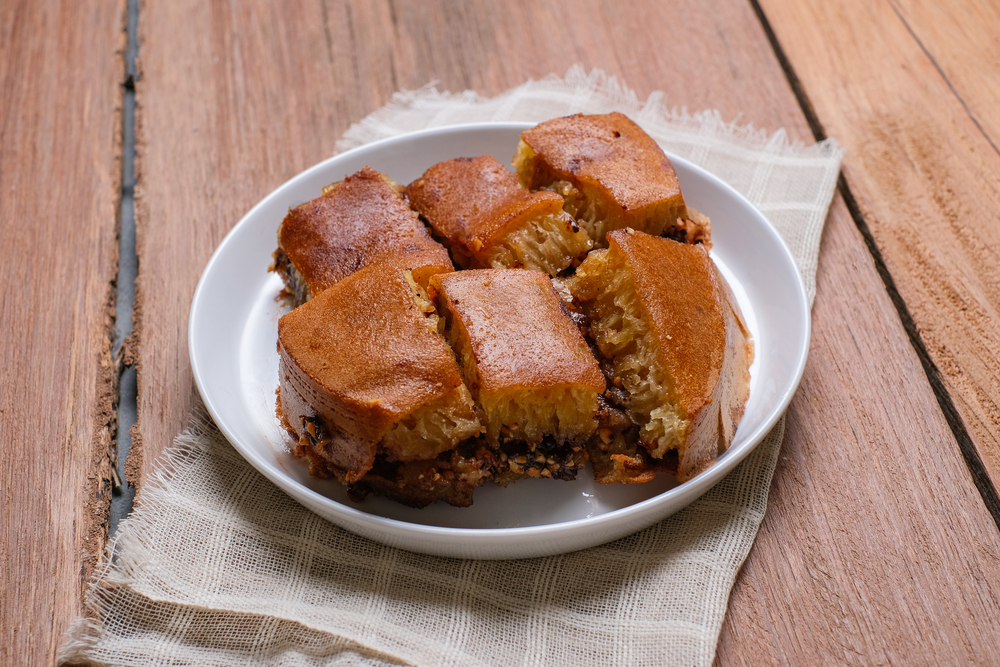
Martabak Manis, also known as “sweet martabak,” is a popular Indonesian street dessert resembling a thick pancake or crêpe. The batter is cooked on a griddle until fluffy, then generously filled with ingredients like chocolate sprinkles, crushed peanuts, condensed milk, and cheese. Once the fillings are added, the pancake is folded in half, creating a rich and indulgent treat. Variations of Martabak Manis can be found across Indonesia, with some vendors offering modern twists such as green tea or red velvet flavors. It’s typically enjoyed in the evenings and is a favorite among those with a sweet tooth.
Kwek-Kwek (Philippines)
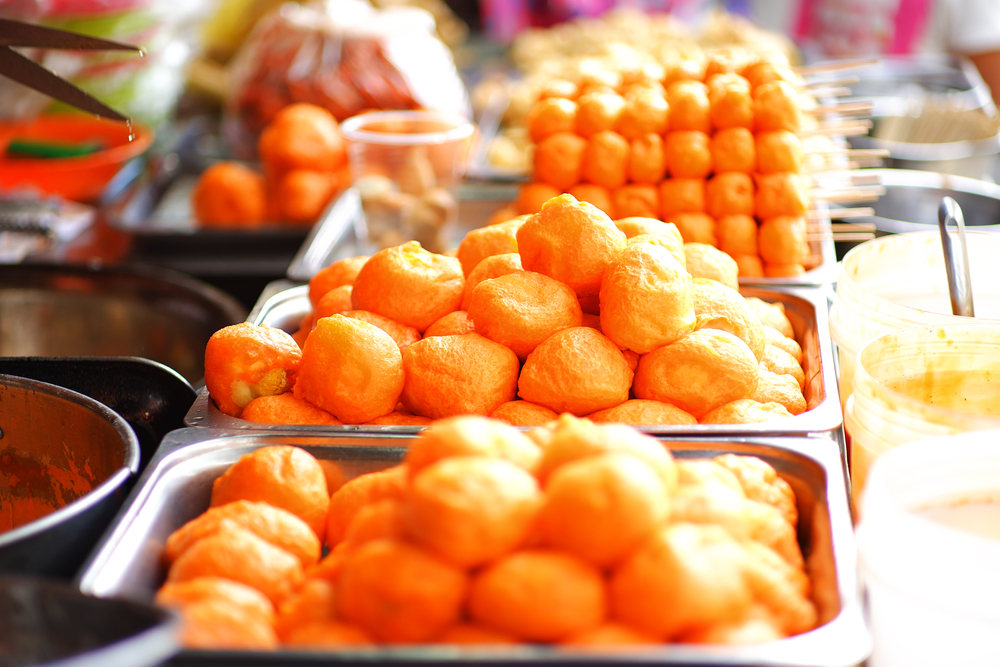
Kwek-Kwek are quail eggs coated in an orange-tinted batter and deep-fried to perfection, resulting in a crispy exterior and soft interior. This Filipino street food is commonly served with a spiced vinegar dipping sauce or a sweet and sour sauce, adding a tangy contrast to the savory eggs. Kwek-Kwek is often sold alongside other battered and fried snacks like fish balls and squid balls, making it a staple in local street food markets. The vibrant orange color comes from annatto powder added to the batter, making it visually appealing. It’s a popular snack among students and commuters looking for a quick bite.
Khanom Buang (Thailand)
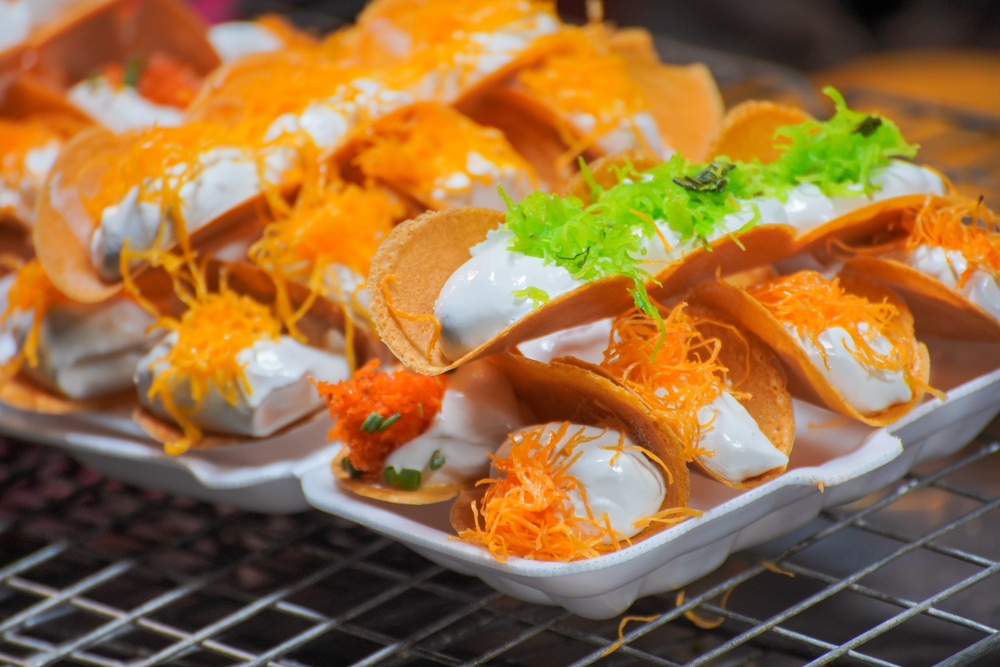
Khanom Buang, or Thai crêpes, are delicate and crispy pancakes filled with sweet or savory toppings. The batter, made from rice flour, is spread thinly on a hot griddle, creating a crisp shell. Common fillings include sweetened coconut cream topped with golden egg yolk threads (foi thong) for the sweet version, or a mixture of minced shrimp, coconut, and cilantro for the savory variant. These crêpes are folded into a taco-like shape and are a popular street snack, especially in Bangkok’s markets. Their intricate preparation and delightful taste make them a must-try for visitors.
Pisang Goreng (Indonesia/Malaysia)
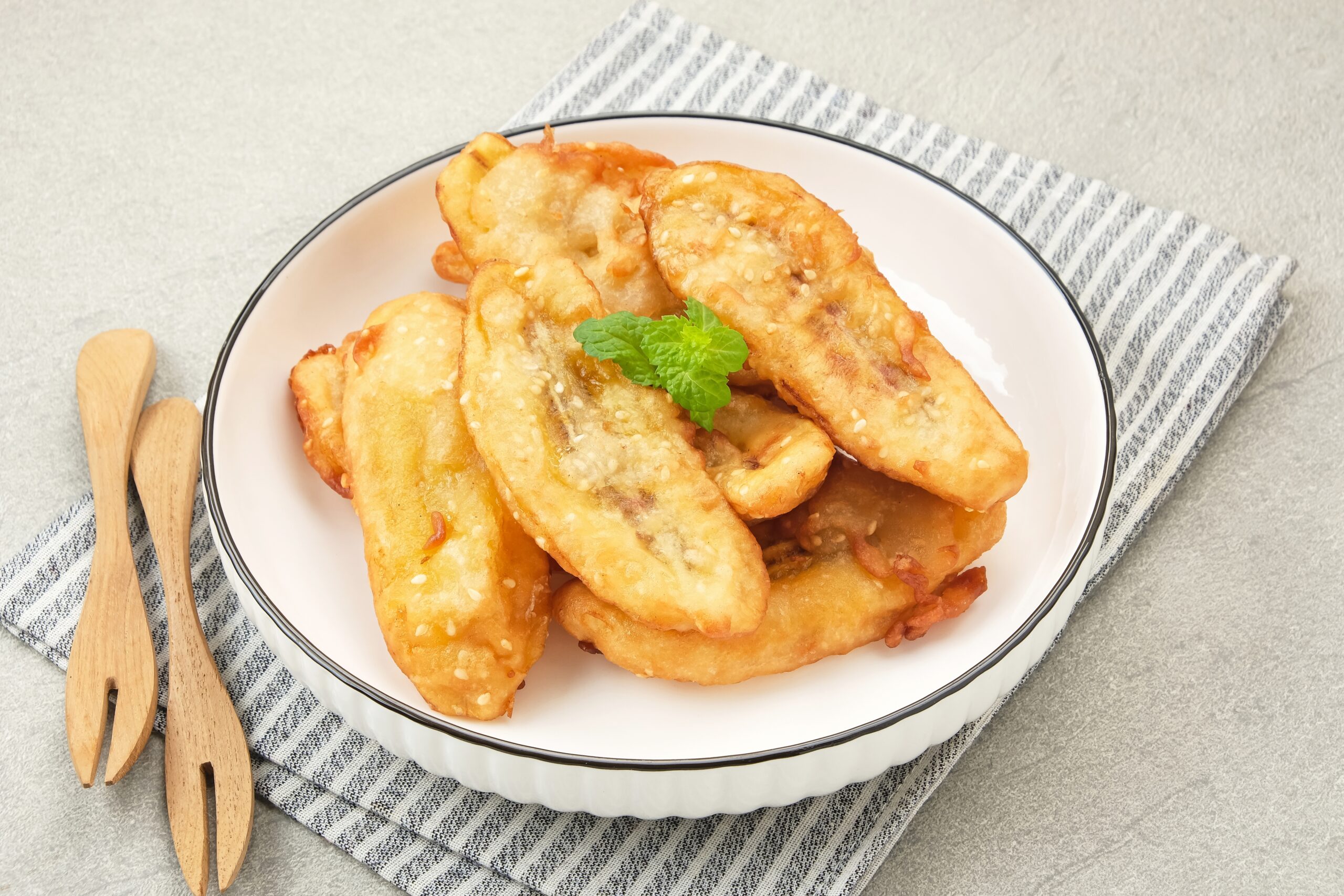
Pisang Goreng, meaning “fried banana,” is a beloved snack in Indonesia and Malaysia. Ripe bananas are dipped in a batter made from flour, sugar, and sometimes coconut milk, then deep-fried until golden brown. The result is a crispy exterior encasing a sweet and soft banana inside. Some variations include adding grated cheese or chocolate sprinkles on top, catering to those with a sweet tooth. Pisang Goreng is commonly sold by street vendors and is enjoyed as a mid-day snack or dessert.
Chả Cá Lã Vọng (Vietnam)
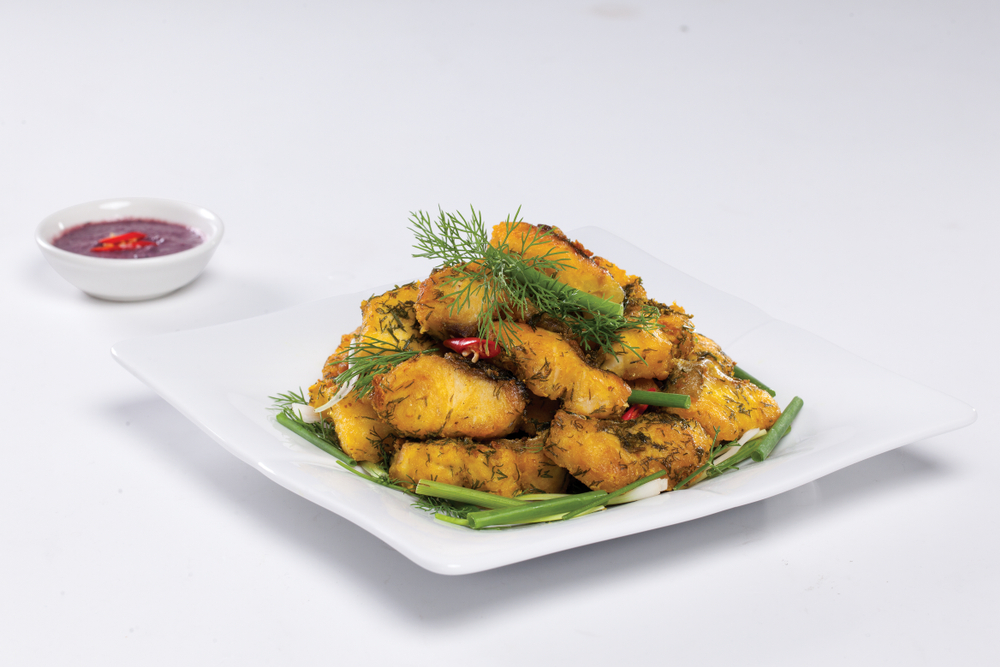
Chả Cá Lã Vọng is a traditional Vietnamese dish featuring grilled fish seasoned with turmeric and dill. The fish is marinated and then grilled or pan-fried, often tableside, allowing diners to experience the cooking process. It’s typically served with rice noodles, peanuts, fresh herbs, and a dipping sauce made from fish sauce, creating a harmonious blend of flavors and textures. Originating from Hanoi, this dish has become a culinary icon and is a must-try for visitors seeking authentic Vietnamese flavors.
Kaya Toast (Singapore/Malaysia)
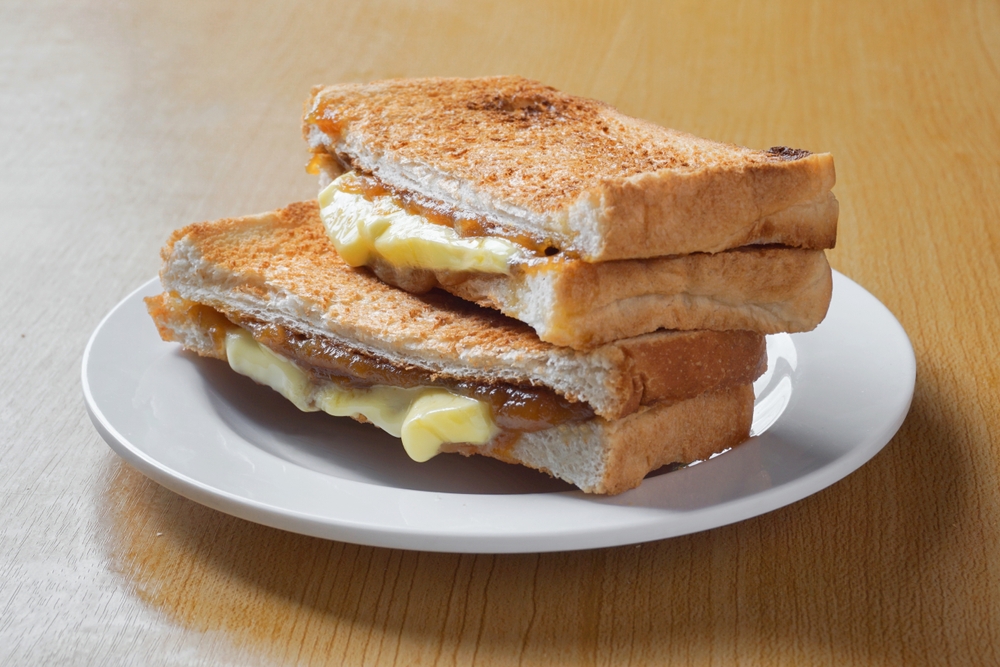
Kaya Toast is a traditional breakfast item in Singapore and Malaysia, consisting of toasted bread spread with kaya—a sweet coconut and egg jam—and a slice of cold butter. The combination of the warm toast, sweet kaya, and melting butter creates a delightful contrast in textures and flavors. It’s commonly enjoyed with a soft-boiled egg seasoned with soy sauce and white pepper, accompanied by a cup of strong local coffee or tea. Kaya Toast is a staple in local coffee shops, known as kopitiams, and remains a beloved comfort food among locals.
Balut (Philippines)
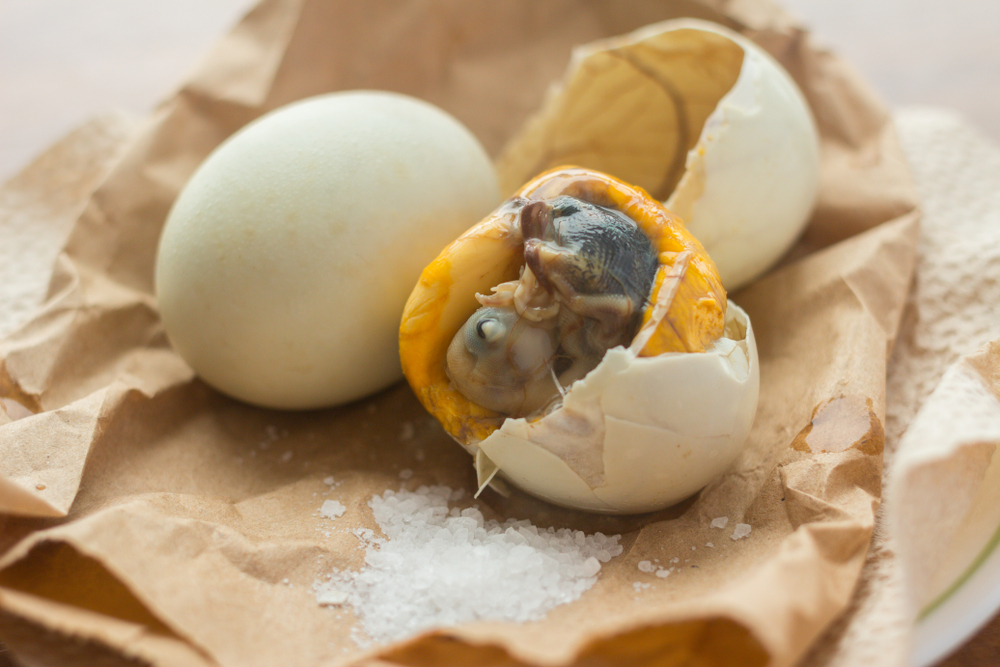
Balut is a fertilized duck egg incubated for about 14 to 21 days, then boiled and eaten from the shell. This unique delicacy contains a partially developed embryo and is seasoned with a pinch of salt or a drizzle of vinegar before consumption. Balut is commonly sold by street vendors, especially in the evenings, and is believed to be a source of strength and vitality. While it may be an acquired taste for some, it remains a popular snack in the Philippines and is often featured in culinary tours for adventurous eaters.
Mango Sticky Rice (Thailand)
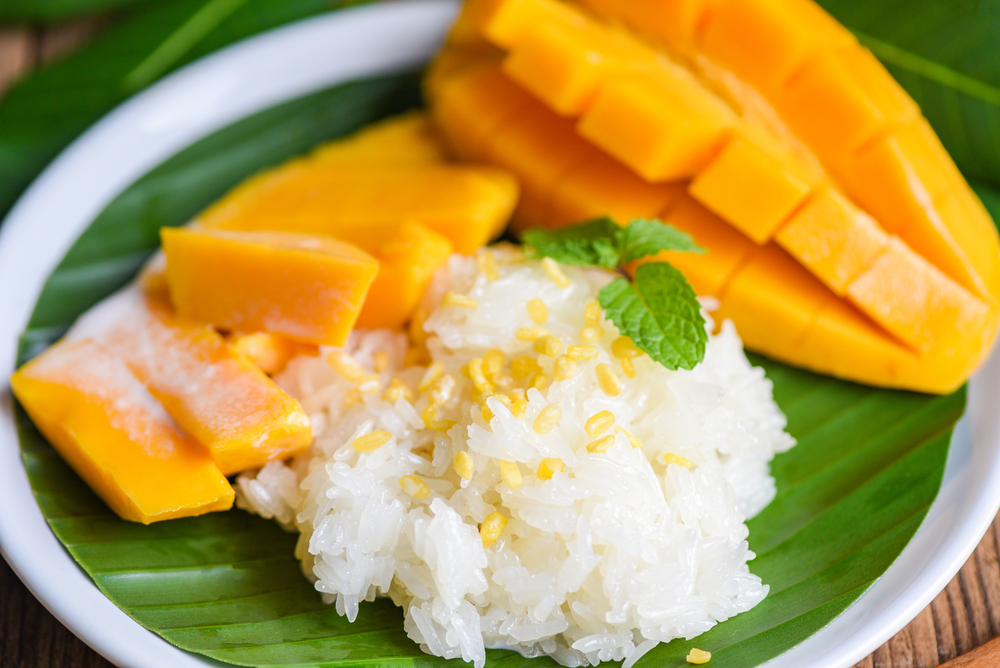
Mango Sticky Rice, or “Khao Niew Mamuang,” is a sweet Thai street food staple. This dish features glutinous rice cooked in coconut milk, served with ripe, juicy mango slices. It’s topped with a drizzle of sweetened coconut cream and sometimes garnished with sesame seeds for added texture. Mango Sticky Rice perfectly balances the creamy, slightly salty rice with the natural sweetness of the mango. It’s widely sold at night markets and street vendors, especially during mango season.
Roti Canai (Malaysia)
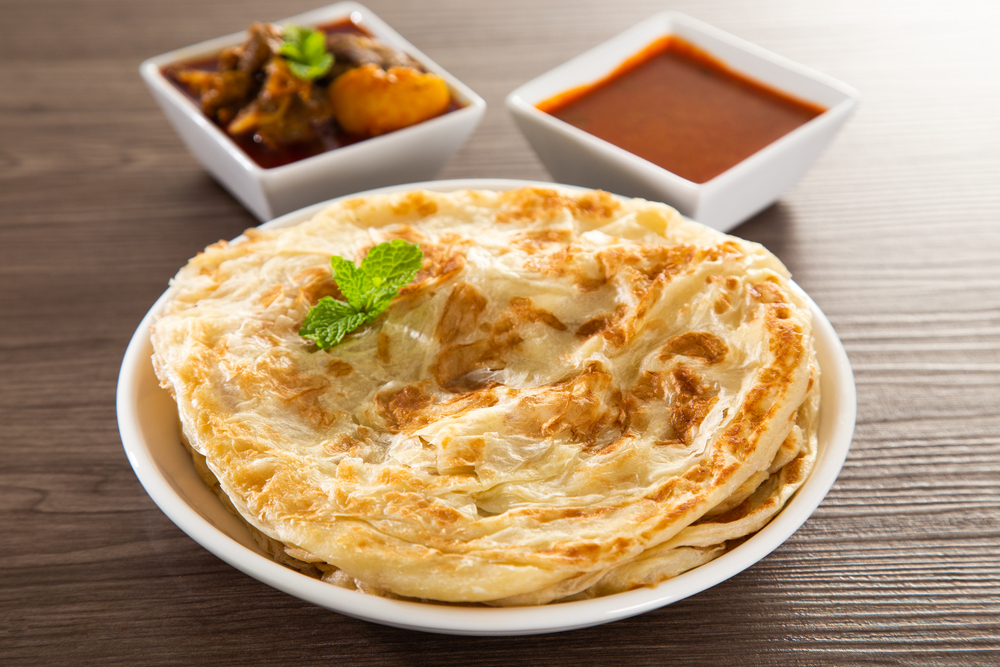
Roti Canai is a flaky, flatbread often enjoyed as a street food snack or breakfast item in Malaysia. The dough is stretched thin and folded repeatedly to create layers, then cooked on a griddle until golden and crisp. Typically served with curry or dhal for dipping, it combines a savory richness with the bread’s buttery flavor. Variants may include fillings like egg, cheese, or banana for added flair. Street vendors skillfully flip and prepare Roti Canai on the spot, making it a crowd favorite.
Takoyaki (Indonesia/Thailand)
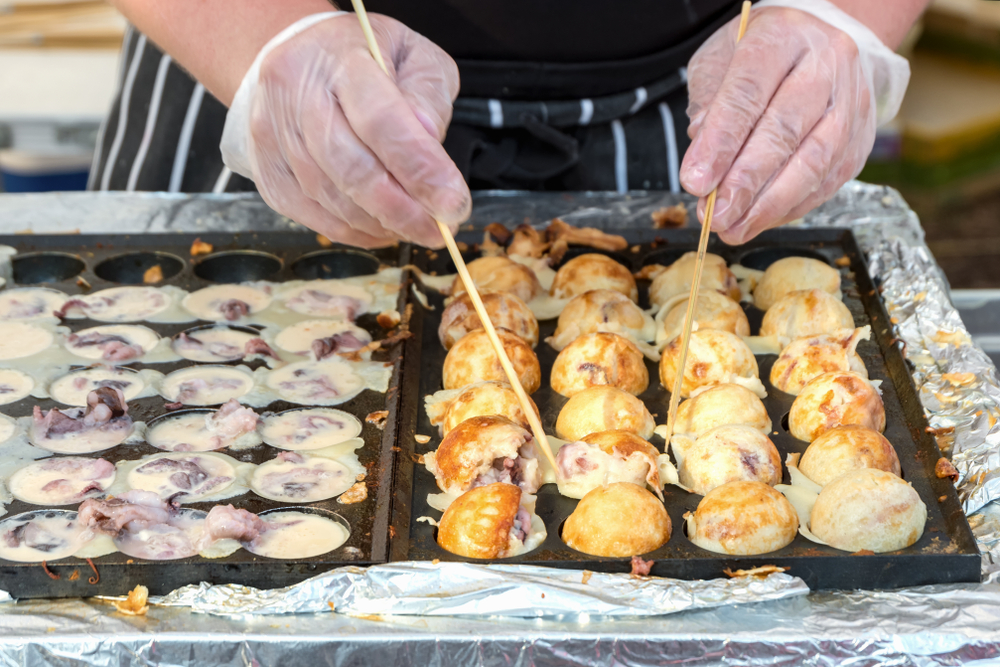
Takoyaki, though originally from Japan, is a popular street food in parts of Southeast Asia like Indonesia and Thailand. These round, bite-sized balls are made from a batter filled with diced octopus, tempura scraps, pickled ginger, and green onions. They’re cooked in specialized pans, turning until golden and crispy on the outside and soft inside. Takoyaki is often topped with mayonnaise, takoyaki sauce, and bonito flakes, which curl with the heat. Vendors serve this savory snack fresh, straight from the pan.
Halo-Halo (Philippines)
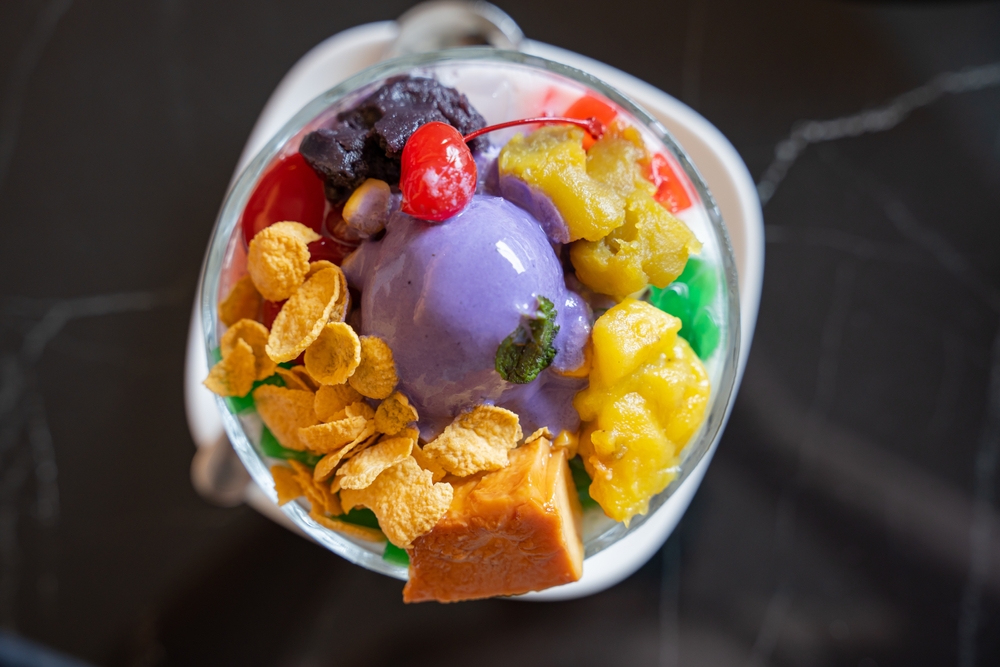
Halo-Halo is a colorful Filipino dessert sold by street vendors, especially during the summer months. This refreshing treat features a mix of crushed ice, sweetened beans, jelly, fruits, and evaporated milk, topped with leche flan or ube ice cream. Each layer provides a burst of different textures and flavors, making it a unique eating experience. The name “halo-halo” means “mix-mix,” reflecting how the dessert is meant to be stirred before enjoying. It’s a go-to street food for beating the tropical heat.
Pandan Waffles (Vietnam)
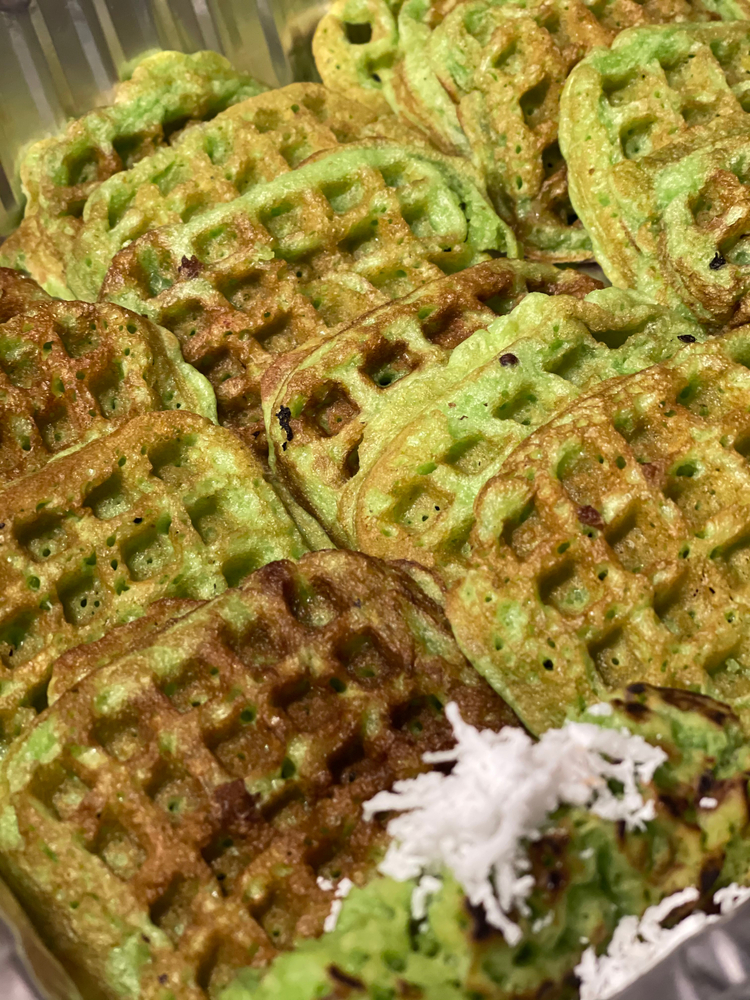
Pandan Waffles are a popular street snack in Vietnam, easily recognizable by their bright green color. Made from a batter infused with pandan leaf extract and coconut milk, these waffles have a sweet, aromatic flavor. Vendors cook them fresh in waffle irons, resulting in a crispy exterior and a soft, chewy interior. They’re often sold as a quick, on-the-go treat in bustling markets and street corners. Their unique taste and vibrant appearance make them a favorite among both locals and tourists.
Coconut Ice Cream (Thailand)
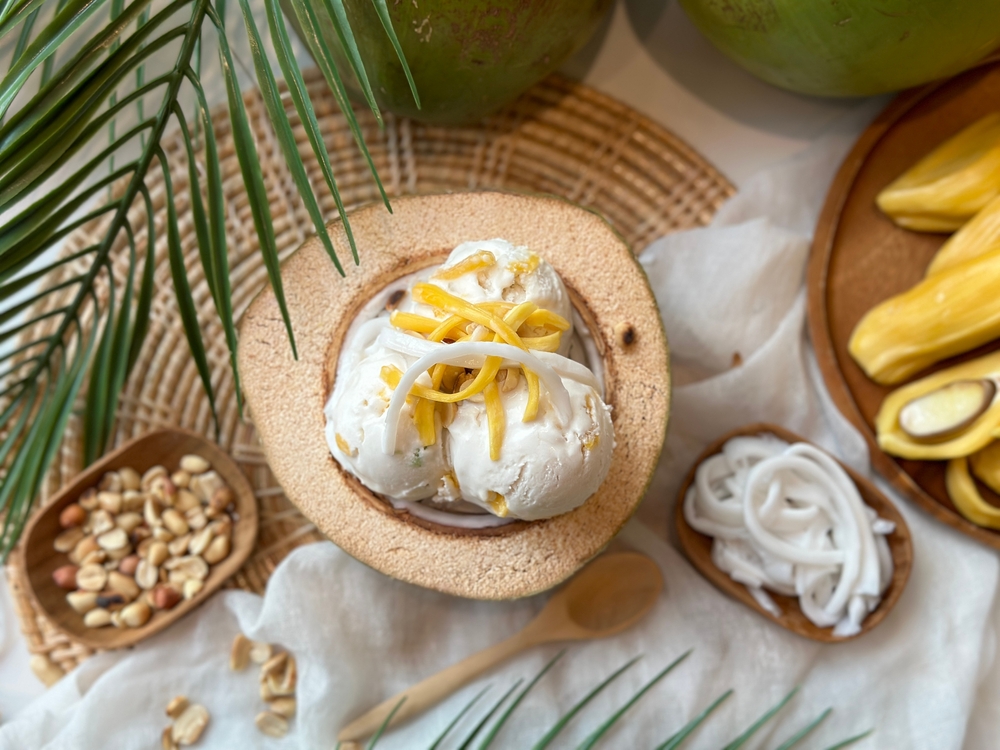
Coconut Ice Cream is a refreshing street food staple in Thailand, perfect for combating the country’s heat. Vendors serve it in coconut shells, often garnished with sticky rice, roasted peanuts, and sweetened condensed milk. The ice cream itself is creamy, slightly sweet, and packed with the natural flavor of coconut. Its presentation in the coconut shell adds an eco-friendly and aesthetic touch. Found in street markets and floating markets, it’s a must-try dessert for anyone visiting Thailand.
Kerak Telor (Indonesia)
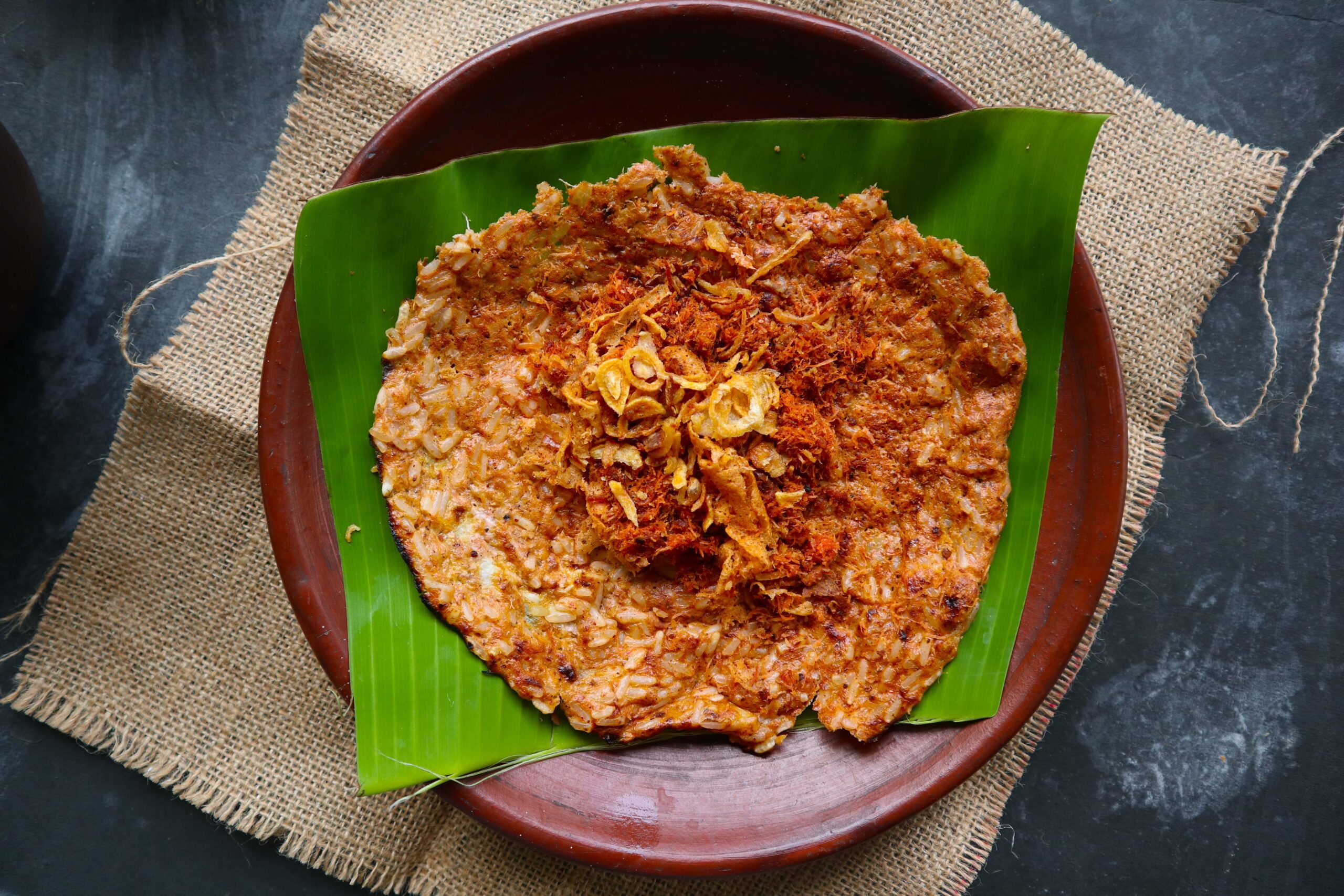
Kerak Telor is a traditional Jakarta street food made from glutinous rice, egg, and shredded coconut. The mixture is cooked on a charcoal brazier and topped with fried shallots and dried shrimp for added crunch and flavor. It’s a savory snack that showcases the city’s culinary heritage and is often found at local fairs and markets. Vendors prepare Kerak Telor on the spot, flipping the pan to give it a slightly charred aroma. This dish remains a nostalgic favorite among Indonesians.
Apam Balik (Malaysia/Indonesia)

Apam Balik is a sweet pancake-like street snack widely enjoyed in Malaysia and Indonesia. It’s made by pouring batter onto a griddle, then filling it with sugar, crushed peanuts, and sweet corn before folding it in half. The outer layer is crispy, while the inside remains soft and filled with a delightful mix of textures and flavors. Some modern variations include chocolate, cheese, or pandan as additional fillings. Apam Balik is a common sight at night markets, making it a must-try snack for visitors.
This article originally appeared on RetailShout.
More From RetailShout
15 Costco November Finds You Don’t Want to Miss
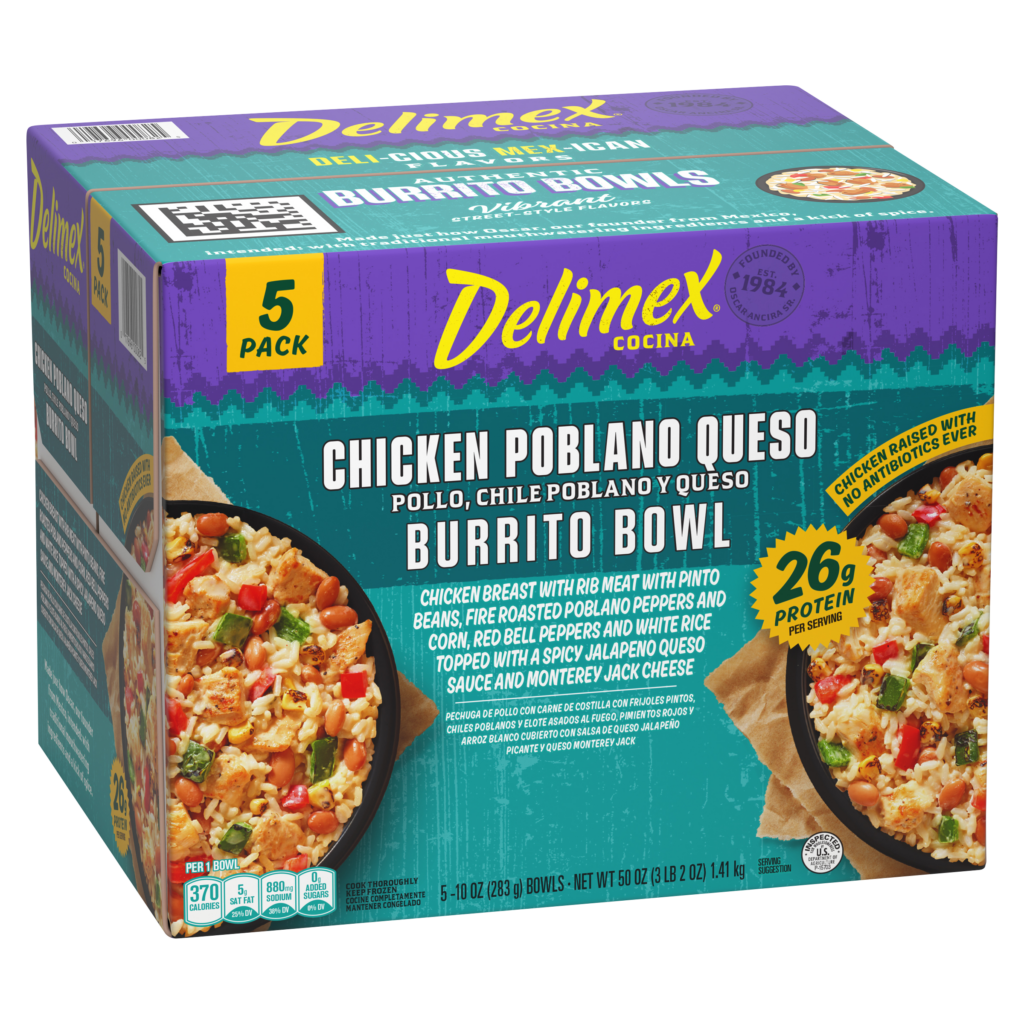
November is an exciting time at Costco, where new finds are popping up just in time for the holiday season. From fresh food to cozy winter essentials, Costco is stocked with high-quality items that offer amazing value. Read More.
15 Pumpkin Spice Treats That Aren’t Lattes to Try This Fall
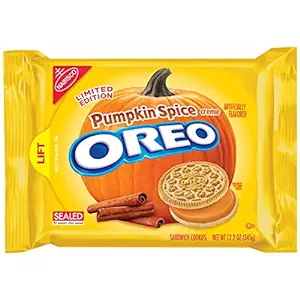
Fall is here, and that means it’s time for all things pumpkin spice! While pumpkin spice lattes usually steal the spotlight, there are so many other delicious treats out there that deserve some attention. Read More.
16 Best ALDI Finds for Hosting the Perfect Fall Gathering
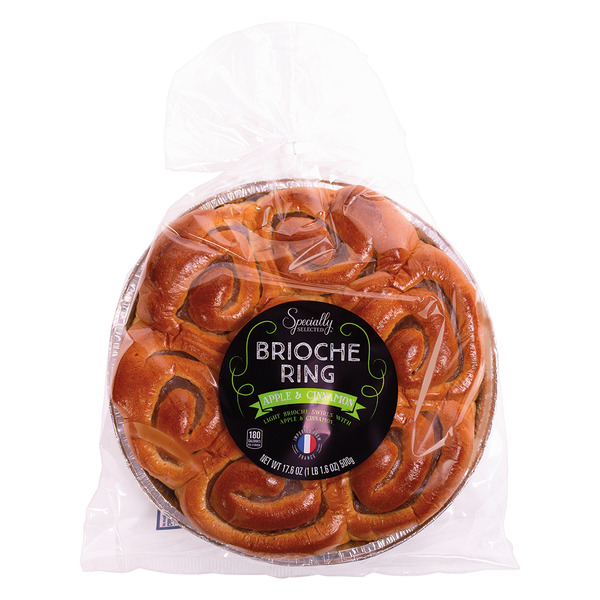
Hosting a fall gathering is all about capturing the cozy, warm vibes of the season. Whether it’s a casual get-together or a festive spread, Aldi has everything you need to make it special. Read More.


